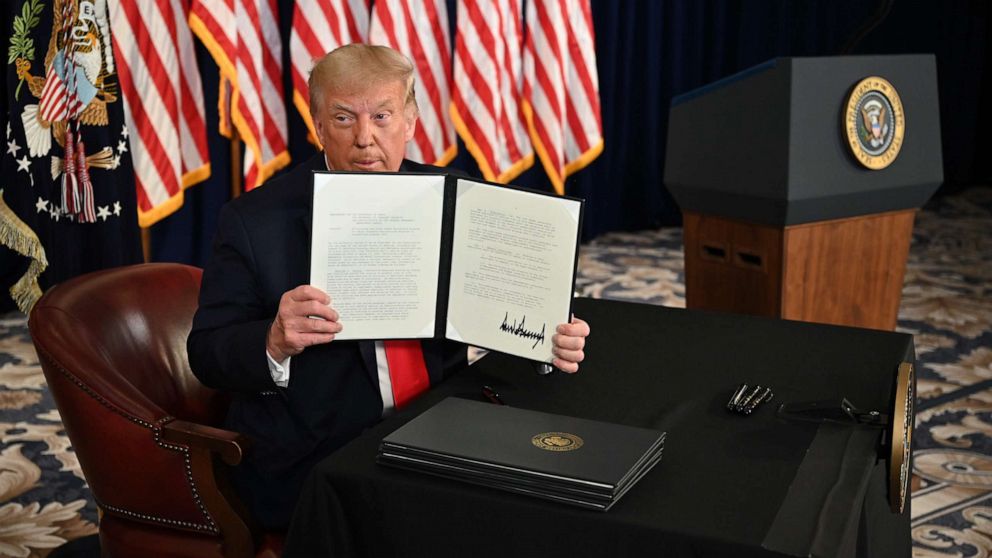As Americans await financial help, Trump's unemployment relief move confuses states
The president’s recent executive action designed to bring economic relief to families struggling during the pandemic does not mean a new round of government checks are about to arrive in the mail.
Instead, Donald Trump's recent announcement about additional unemployment benefits intended for millions of Americans has more quickly produced confusion among some state officials about where a large portion of the money will be coming from and the financial burden each state may be expected to take on -- all amid some mixed messages from the White House and scant federal guidance on how it all would actually work.
Officials in a handful of states told ABC News they planned to participate in the White House program, but a majority of states have made no such commitment, with two dozen state officials specifically saying this week they're waiting on further guidance from the federal government or are still reviewing the White House proposal. More than a dozen states said that if they end up having to pay for a portion of the relief, it would put a significant strain on state budgets that have already been steamrolled by the coronavirus pandemic.
Trump's action came after leaders in Congress failed last week to agree on a new, expansive coronavirus relief bill, and the White House has defended Trump's move as a way to fast track relief for Americans that continue to struggle financially.
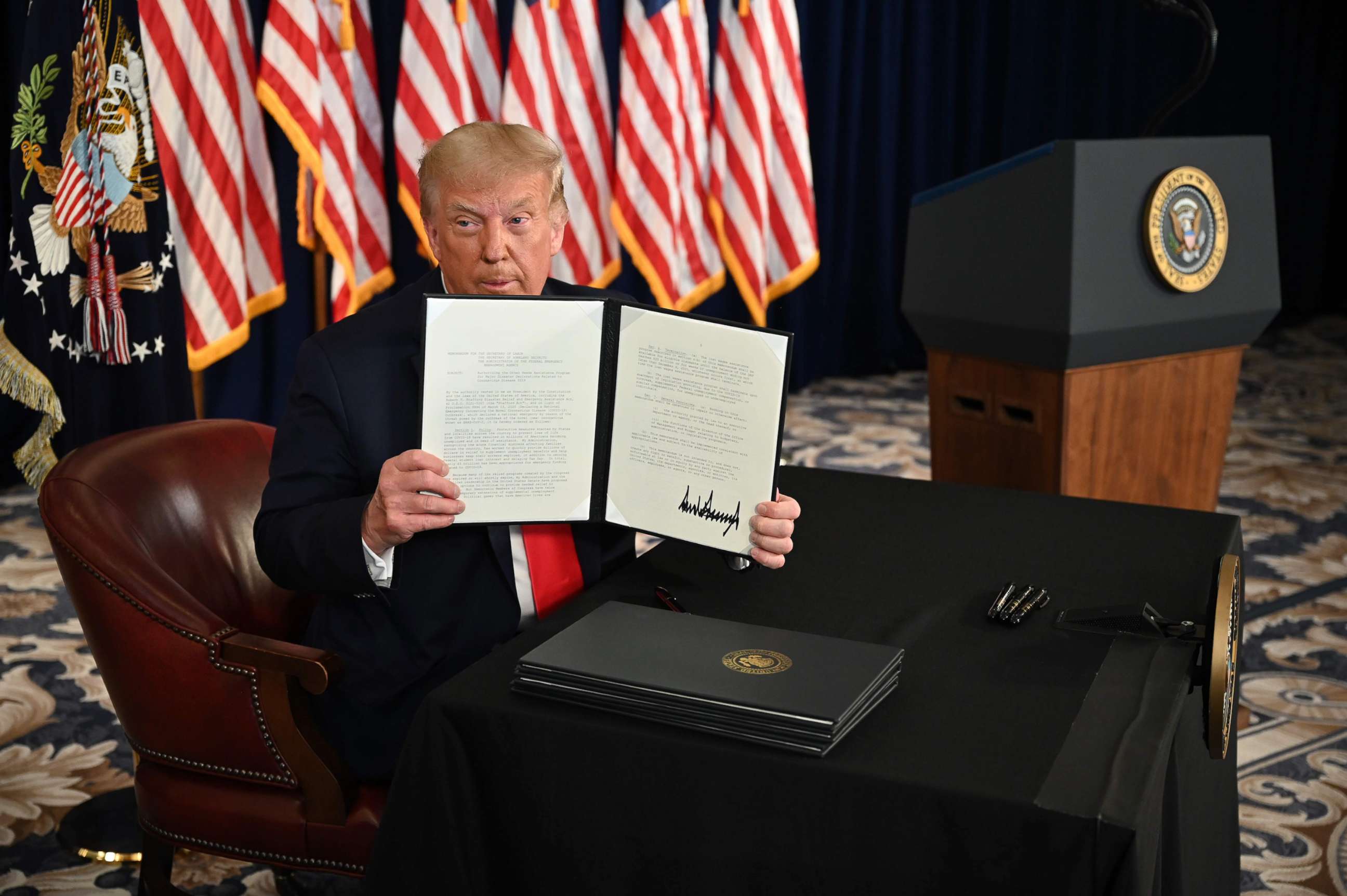
But on Monday, Maine Gov. Janet Mills, a Democrat, said the memorandum raised more questions than answers, and said the potential additional expense to the states themselves would threaten important programs and services.
“With the myriad legal and logistical questions these orders and memoranda raise, the President’s actions over the weekend appear to subordinate real relief for unemployed Americans to partisan gamesmanship, making Maine families a paw in a cruel political game,” Mills wrote in a statement.
The memo, then some mixed messages from the White House
The states' questions revolve around a memorandum, signed by the president on Saturday, that was meant to provide $400 a week for additional unemployment insurance benefits for individuals on unemployment, with a $300 contribution from the federal government and the rest, $100 or 25%, from the states.
According to the memo, the unemployment benefits will be available until the Disaster Relief Fund (DRF) reaches $25 billion or for weeks of unemployment ending no later than December 6, whichever occurs first.
But since the signing there have been questions about the states' portion of the payment, which for some is expected to reach into the hundreds of millions of dollars, and the different answers coming from those in government.
For his part, the president indicated the financial obligation could change state-to-state -- a suggestion that was not spelled out in the memorandum.
“Yeah, we have a system where we can do 100% or we can do 75%, they'd pay 25%, and it'll depend on the state, and they'll make an application, we'll look at it and we'll make a decision,” Trump told reporters on Sunday, without detailing how the decisions will be made. “So it may be they'll pay nothing in some instances, it may be a little bit.”
When asked by reporters about the states' obligations on Monday, White House press secretary Kayleigh McEnany said states were "required by statute" to provide their portion of the funding to receive the other $300 in federal aid or count existing state unemployment funds as their 25% contribution which will require an application process.
"Because as you know, it's 75% federal government covering and 25%, the states," McEnany said. "And they can use C.A.R.E.S. funding or even existing unemployment funds for that $100. That will require an application process."
Early federal guidance from the U.S. Department of Labor provided to at least three states Sunday evening and obtained by ABC News further explained that second option in which states could count existing state-funded unemployment insurance weekly benefits payments as their contribution.
White House economic advisor Larry Kudlow explained most recently on Tuesday, all 50 states should qualify for the federal government's $300 aid without additional state funding. Officials in Ohio, New Hampshire and New Jersey told ABC News they were provided the federal guidance described above, but several other states did not respond to questions about it, and it remains unclear if it went to all 50 states.
But Kudlow on Sunday caused some confusion on how much exactly people would be receiving in federal assistance by listing a range of numbers that he later explained was an estimated range of the total amount an individual could be getting from the federal government and a state.
"Right now, that number is going to run around $700. I think they will get to $800. Some states can get above $800 with our federal help. And, again, the key point here is that it's a wage increase, Dana, of about $1,200 for the last four months of the year. That's a big pay hike," Kulow said on CNN.
As many Americans struggle, some states push for clarity
In the wake of the original memo, the early guidance and the officials' statements, some state leaders and other officials said they still feel left in the dark, with a myriad of unresolved questions, and are waiting for additional details from the federal government before making a decision on how to proceed -- with their citizens waiting in the wings.
“There are far more questions than answers, and there is currently almost no guidance from federal agencies about how either option might work,” Washington Gov. Jay Inslee, a Democrat and vocal Trump critic, wrote in a statement. “The program appears woefully insufficient relative to the scale of the crisis, unworkable in its proposed form, and a bad deal for workers, employers, and states.”
Richard Lavers, deputy commissioner of New Hampshire’s Employment Security, told ABC News while the new White House proposal offers new opportunities for the state, it would need to get additional guidance from the federal government on three key aspects of the new unemployment benefits before moving ahead: the sources of the state portion of funds, the level of collaboration in implementation that would be allowed with the state’s existing unemployment system, and any restrictions on who would be able to access the benefits.
Lavers said he has seen “some references” to the potential waiver for the 25% match, but said the state has not been given enough guidance to make any decision yet.
Brooke Scheffler, the spokesperson for Utah's Republican Gov. Gary Herbert’s office, told ABC News that the state would consider pursuing the federal funds if the administration develops a way for the state to qualify for the $300 benefits “without burdening our budget and the health response.”
For some states, the White House’s language about the states' obligation in the memorandum set off alarms as they were already struggling with their budget amid a costly pandemic response.
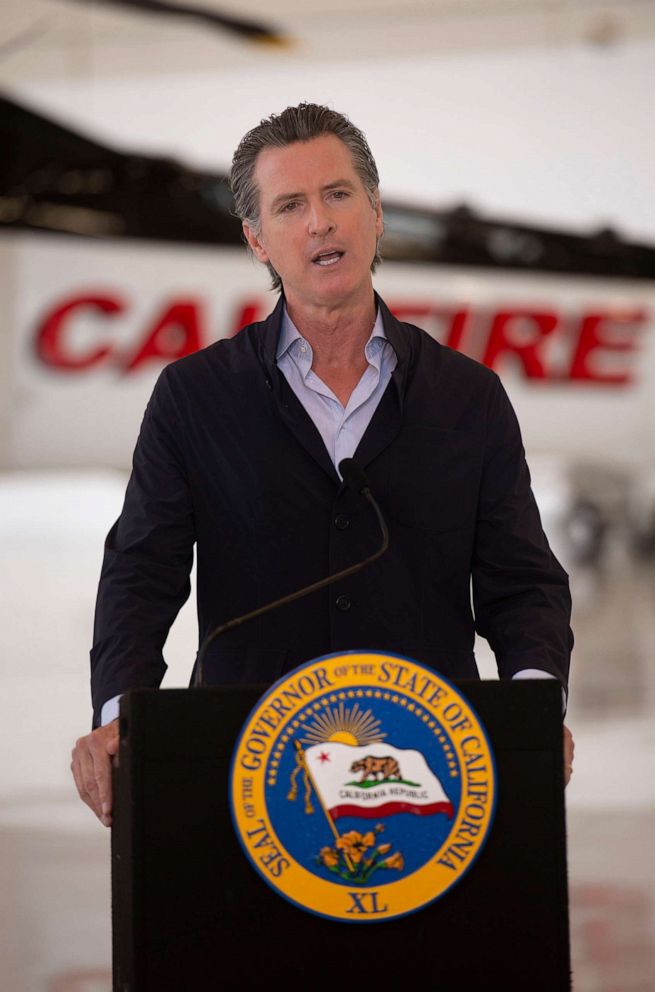
California Gov. Gavin Newsom in a scathing tweet on Sunday called the memorandum “absurd,” saying “Americans need real help -- not false promises.”
The Democratic governor said during his daily press conference on Monday that the White House proposal would cost California at least $700 million per week -- and possibly up to $2.8 billion a week -- and emphasized that the money “simply does not exist" after all the state has spent on public services amid the pandemic.
“The rest of money simply does not exist,” Newsom said, adding that the state would need the federal government to provide support for the 25%. “There is no money sitting in the piggy bank of the previous [federal coronavirus relief] CARES Act to be reprioritized or reconstituted for this purpose. It simply does not exist.”
Connecticut Gov. Ned Lamont, D., said on CBS’ “Face the Nation” on Sunday that the plan would cost the state roughly $500 million through the end of the year, emphasizing “the president’s plan is not a great idea.” Similarly, New Jersey Gov. Phil Murphy, also a Democrat, said that in his state, the cost would easily surpass Connecticut’s number, saying “It’s just not workable.”
In mid-July, Republican Wyoming Gov. Mark Gordon announced more than $250 million in budget cuts, nearly 10% of the state’s general fund budget. But even with the deep budget cuts, the state is still predicting a budget shortfall of more than $600 million. Like some others, the state is waiting on additional guidance from the Department of Labor.
Kentucky Gov. Andy Beshear expressed his frustration on a conference call with fellow Democrat New York Gov. Andrew Cuomo on Monday, saying the state is struggling enough as it is, currently seeing high short-term unemployment.
Beshear said the state would have to pay between $48 million to $60 million per month. But based on his calculations, Beshear said he is worried states might end up having to pay the full $400 if the federal funding cap is hit early.
“But based on calculations as to how much money was set aside, the federal program might only last 5 weeks, meaning states would be left picking up that full $400,” said Beshear. "Looking at the last three months to get through the year, we'd be looking at over $1.5 billion, something that's just not possible for the Commonwealth of Kentucky.”
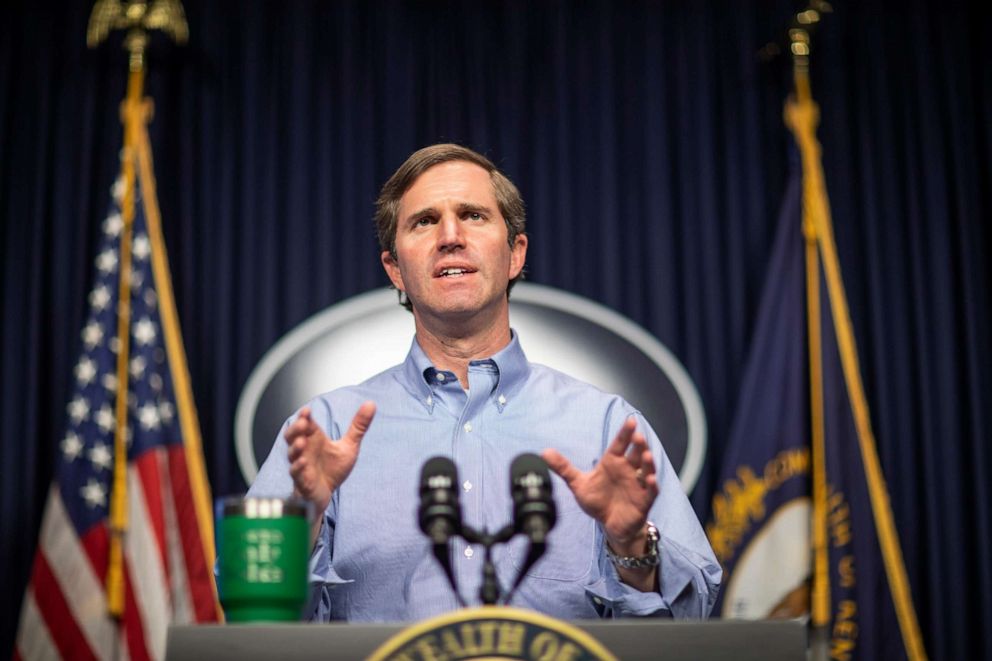
A few states jump on board White House plan
Still, officials in a few states -- all led by Republicans -- said they were eager to join the White House plan.
On Monday, Ohio Gov. Mike DeWine, a Republican, announced that his state has chosen to accept the $300 federal contribution at no state cost, based on the guidance his government received.
“We plan on working with other states and with the federal government, Trump administration and the Department of Labor to hopefully ease any implementation concerns ahead of that,” DeWine’s spokesperson Dan Tierney told ABC News. “Obviously, the more uniform the benefit is, the easier it is to implement.”
At least four other states have told ABC News that they will gladly participate in the new White House program. Arkansas and West Virginia have already announced that they will pay the 25% of the unemployment benefits, while states like Arizona and South Carolina have said they’re willing to participate without further detailing what it would look like.
Arkansas's Republican Gov. Asa Hutchinson said the state has no budget shortfalls and has over $200 million in surplus or reserve funds they could use to meet the 25% share. But he said there would be delays in getting the funds “out the door” because it would require legislative approval.
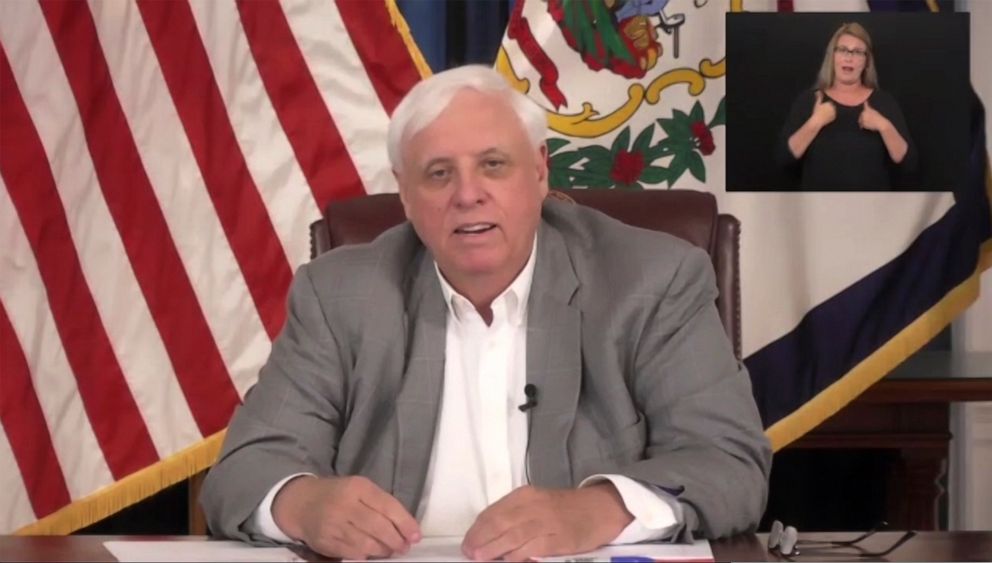
In Arizona, Republican Gov. Doug Ducey’s spokesperson Patrick Ptak said the governor’s office is “very thankful to President Trump for extending these critical benefits,” and “will be working diligently to apply these changes in Arizona.” Another Republican governor, Henry McMaster of South Carolina, said during a press gathering that his state is moving forward with the White House proposal as well, though he didn’t elaborate further on how the state would implement the plan.
In a press briefing on Monday, West Virginia Gov. Jim Justice said he will “very willingly” pay the 25% which would total about $26 million per week. The state would use $678 million from the CARES funding that was set aside early on.
“We’re hopeful that the federal government is going to reverse where the states don’t have to pay the 25%,” Justice said, “but we’ve got the money set aside... because you’ve got people wondering how they’re gonna make a car payment.”
Editor's Note: This report has been updated to reflect that White House Press Secretary Kayleigh McEnany on Monday discussed the possibility of states using existing unemployment funds as their contribution to the White House proposal. The original version of this report mischaracterized her statements. The update also includes an additional quote from White House economic advisor Larry Kudlow to CNN.
What to know about coronavirus:
- How it started and how to protect yourself: Coronavirus explained
- What to do if you have symptoms: Coronavirus symptoms
- Tracking the spread in the U.S. and worldwide: Coronavirus map
